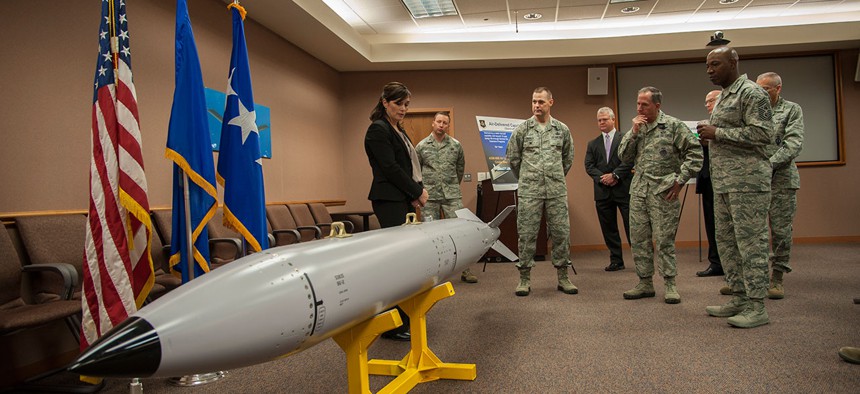Air Force Wants to Get New Nuclear Weapons Faster
Just months into the first development contracts, the service’s top general is looking for ways to speed things up.
KIRTLAND AIR FORCE BASE, N.M. — Design work is barely underway for the U.S. Air Force’s new ICBMs and nuclear cruise missiles, and already the service’s top general is looking for ways to speed up the process.
Less than three months after the Pentagon awarded contracts to begin designing crucial cutting-edge components for the proposed weapons, Gen. David Goldfein said he’s “comfortable with the technology I’m seeing,” but “not as comfortable with the schedule.” The new ICBMs and cruise missile are expected to be battle-ready in the late 2020s — if Congress and the White House approve the acquisitions, whose cost is expected to approach $100 billion.
“My sense is that we’re in a good place right now in terms of how we’re working with industry going forward,” the Air Force chief of staff said in an interview. “The question I’ll continue to have is: How to I move it left. How do we get this capability earlier. Because if you can actually get it faster, you can get it cheaper sometimes.”
In August, the Air Force chose Boeing and Northrop Grumman to work on the new ICBM, a project called the Ground-Based Strategic Deterrent. It is meant to replace the Minuteman IIIs that sit ready in silos spread across Montana, Wyoming, and North Dakota.
Over the next three years, the two companies will collectively build about 20 different prototypes of components for the new ICBM, according to officials at the Air Force Nuclear Weapons Center here who are overseeing the project. The Air Force will then evaluate the two firms’ work and — and, if Congress and the Pentagon give the go-ahead — choose one of them to build more than 400 new ICBMs.
When Goldfein asked officials here whether it would be possible to speed things up, Maj. Gen. Shaun Morris, the commander of the Air Force Nuclear Weapons Center, said, “We’re looking at that.”
As for the new cruise missile — called the Long-Range Standoff weapon — the Air Force has hired Lockheed Martin and Raytheon to develop technology and make parts over the next five years before choosing a winner. The missile is intended to replace the Air-Launched Cruise Missile, which is carried by the B-52 bomber.
Goldfein said the fundamental role of the two new nuclear weapons will not change significantly from their predecessors.
“What changes is the operating environment that they’re going to execute their missions in,” he said.
The Long-Range Standoff is being designed to fly in an anti-access, area-denial environment, the military term for a region where an enemy has air defenses that can detect, shoot down or electronically jam non-stealthy aircraft and weapons.
As for the new ICBM, it “will operate in an environment where cyber vulnerabilities are different than what the Minuteman faced [and] has far more congestion in space than what Minuteman faced,” Goldfein said.
Then there’s the cost. Just last month, the Congressional Budget Office said it could cost $1.2 trillion to operate, maintain and upgrade the Pentagon’s nuclear forces over the next 30 years. That includes buying new stealth bombers, Navy submarines, and command-and-control infrastructure. The Pentagon has said the new ICBM could cost $85 billion. The Air Force is planning to buy about 1,000 new nuclear cruise missile, estimating a price tag of about $10 billion. Experts have questioned whether all of the new weapons are affordable.
The size of the nuclear force and new types of new nuclear weapons are being looked at as the Trump administration conducts a Nuclear Posture Review, which is expected to wrap up as soon as next month or early next year.




